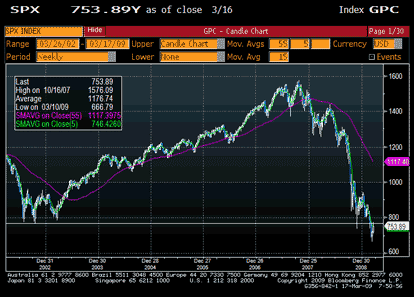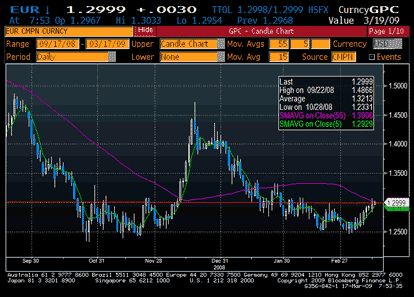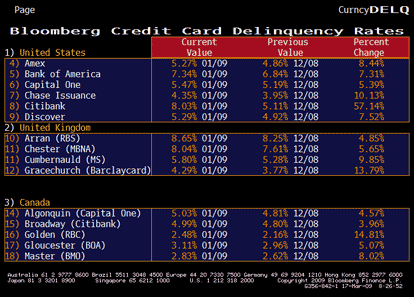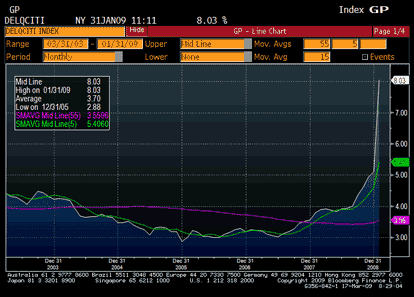Well, after a 16% trough-to-peak rally in just a week and a half, things might be about to get very interesting indeed for the S&P 500. The index touched and briefly breached the support-turned resistance at 767, the old reaction low from 2002, but failed to close above it. With the Fed announcement on Wednesday, the TALF on Thursday, and triple witching on Friday, Macro Man frankly wouldn’t be surprised by any weekly close between 700 and 800.
Spoors aren’t the only asset price at a critical juncture. EUR/USD, which has attracted a reasonably bullish following over the past week or so, managed to breach an old high of 1.2992 yesterday, registering the first “higher high” since the Great Chinese Screwjob (or whatever it was) last December.
Still….price action since it breached 1.30 has been less than impressive. The market got excited by yesterday’s January TIC data showing huge net sales of US assets, but Macro Man finds this data to be so misleading as to be worse than useless. The only month out of the last four reported that the TIC showed a net inflow into the US was December. This was, coincidentally or not, the only month of four when the DXY actually fell. So perhaps what the TIC is caputring is fire-sales of USD assets for foreign banks, etc. in desperate need of dollars. Inquiring minds want to know….
Elsewhere, an interesting recent release that has garnered a modest amoutn of attnetion is the credit card deliqeuncy data, recently released for January. Bloomberg carries figures for fifteen issuers in the USA, UK, and Canada. All fifteen saw delinquency rates rise in January from December. Who knew that “stop paying my credit card bill” was such a popular New Year’s resolution?
Particularly notable was the sharp rise in delinquencies at Citi. While comfortably large spreads have no doubt propelled Citi’s markets division to decent profits so far this year, per recent comments from The Bandit, the deterioration in its bread-and-butter consumer credit business must be eye-watering.
Macro Man doesn’t do single name stocks, and frankly has no idea (or at least one that’s he’s prepared to make public) whether C is a buy, sale, or hold. But the underlying dynamic, one of rising non-performing loans (and concomitant non-performance of structured credit products that bundle them together) is far from bullish. Stories are beginning to ciruclate that the Fed is struggling to find many interested parties to participate in the TALF. If that goes down like a lead zeppelin, the risk must be that equities swiftly follow.
- Bulenox: Get 45% to 91% OFF ... Use Discount Code: UNO
- Risk Our Money Not Yours | Get 50% to 90% OFF ... Use Discount Code: MMBVBKSM
Disclaimer: This page contains affiliate links. If you choose to make a purchase after clicking a link, we may receive a commission at no additional cost to you. Thank you for your support!






Leave a Reply